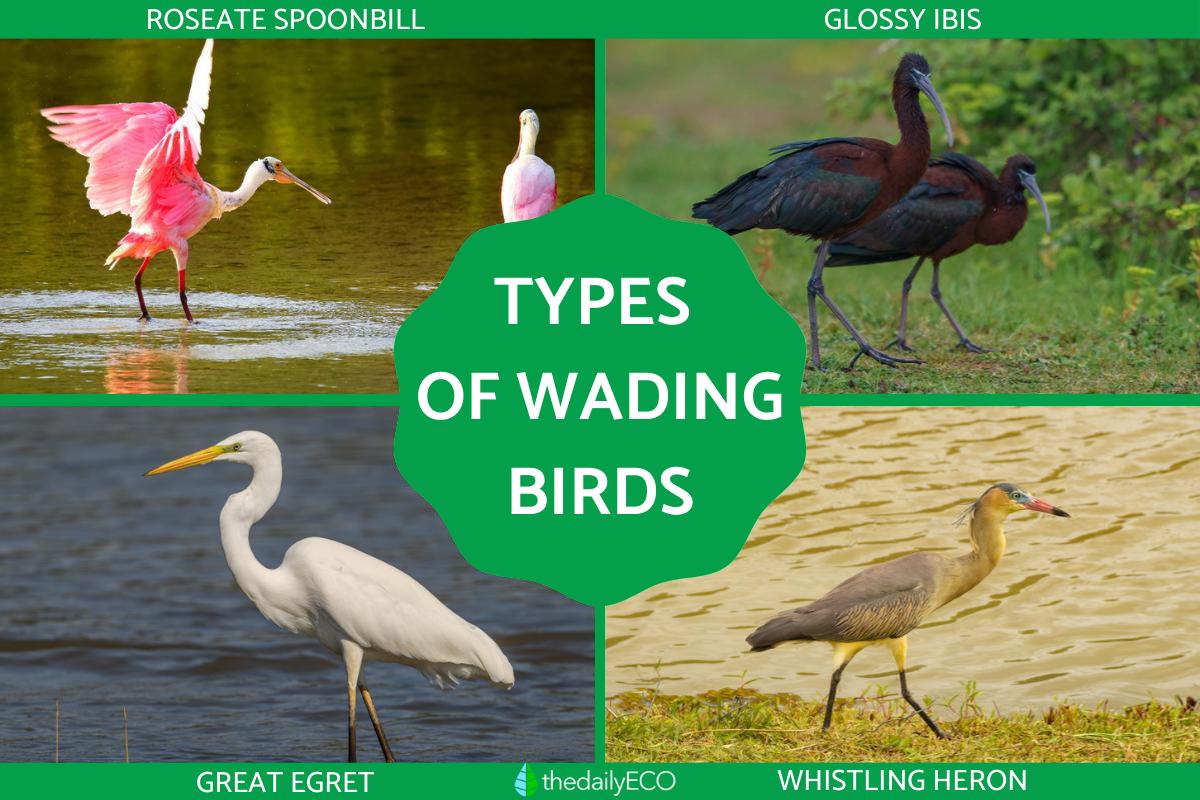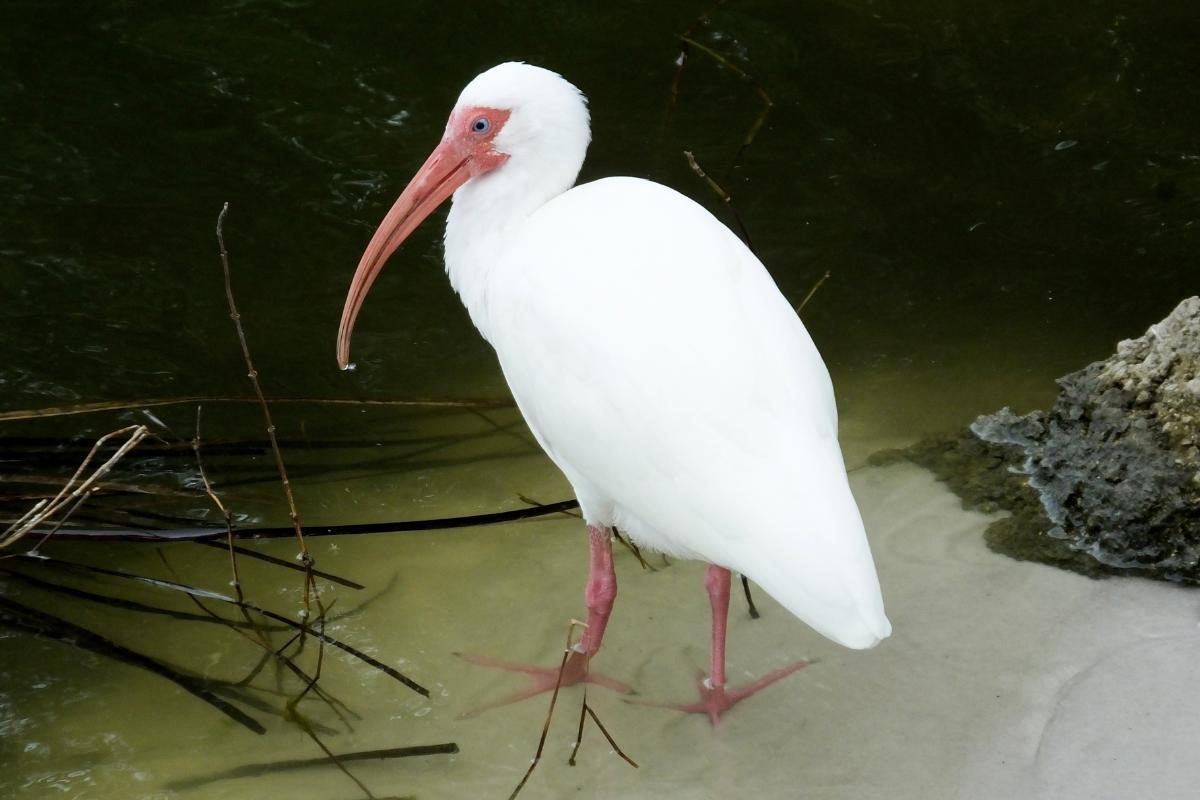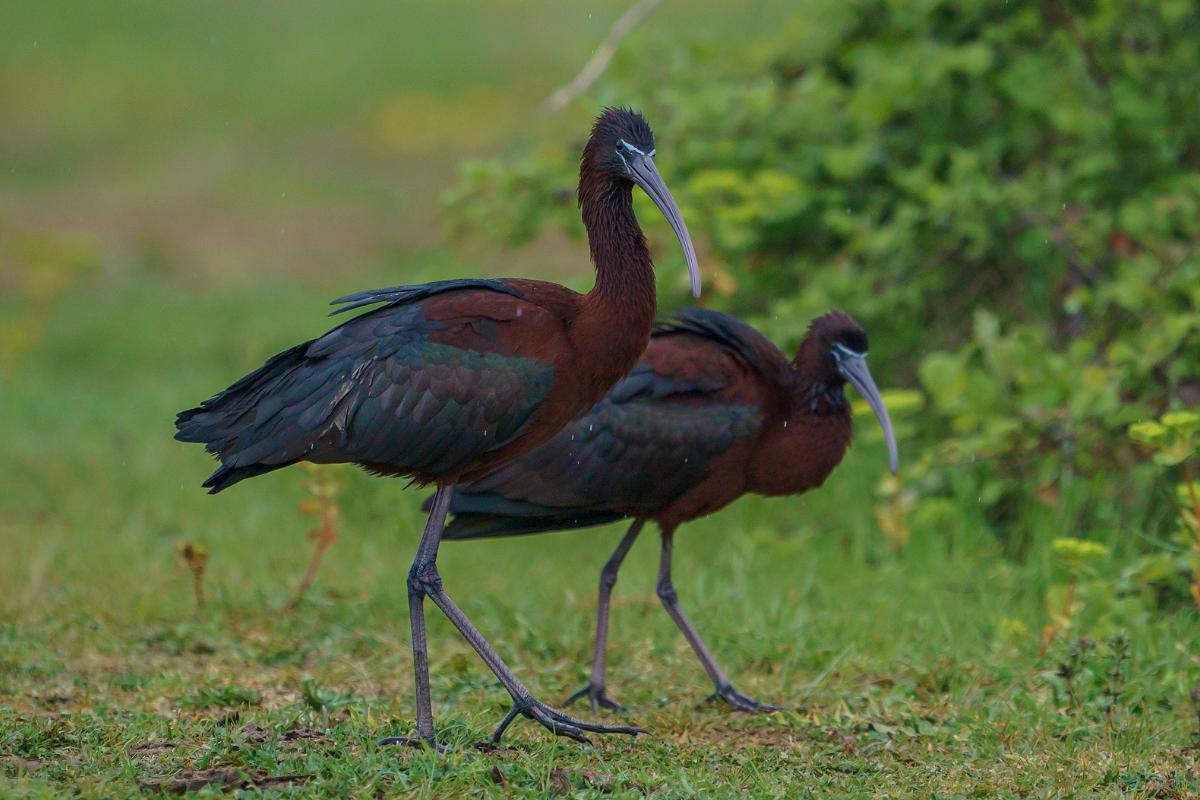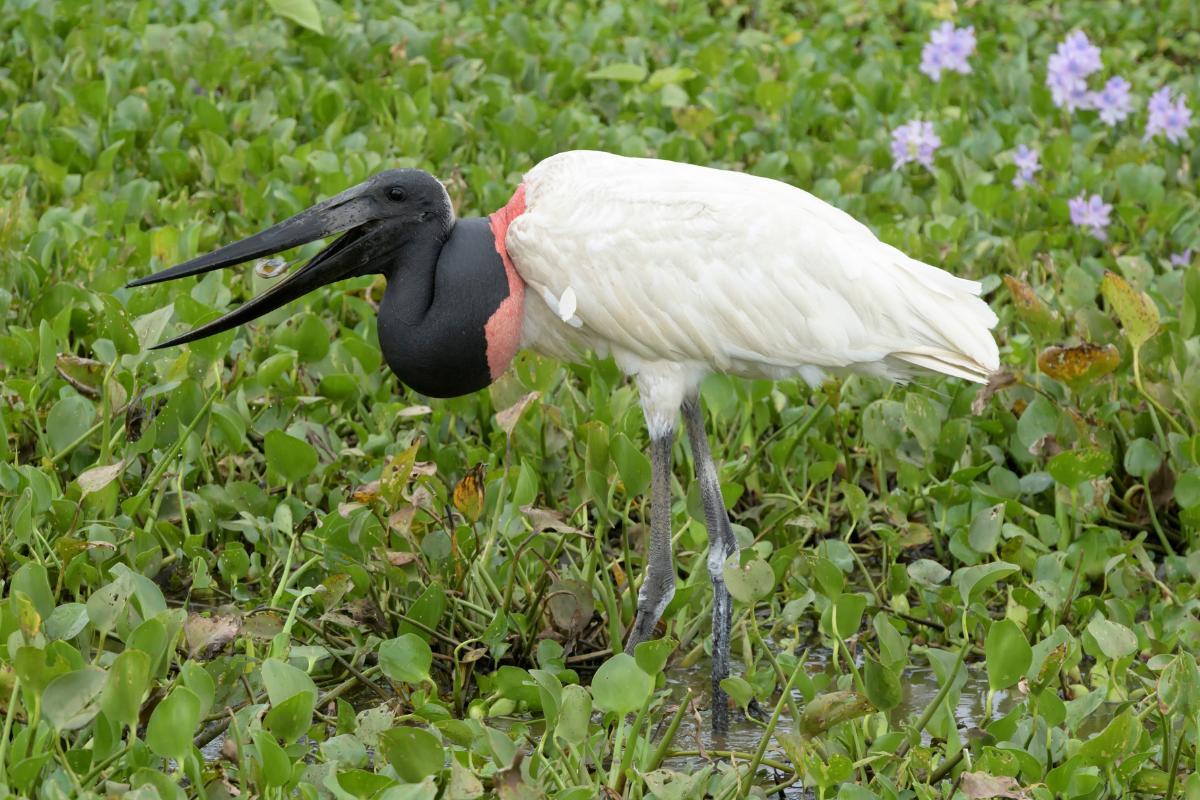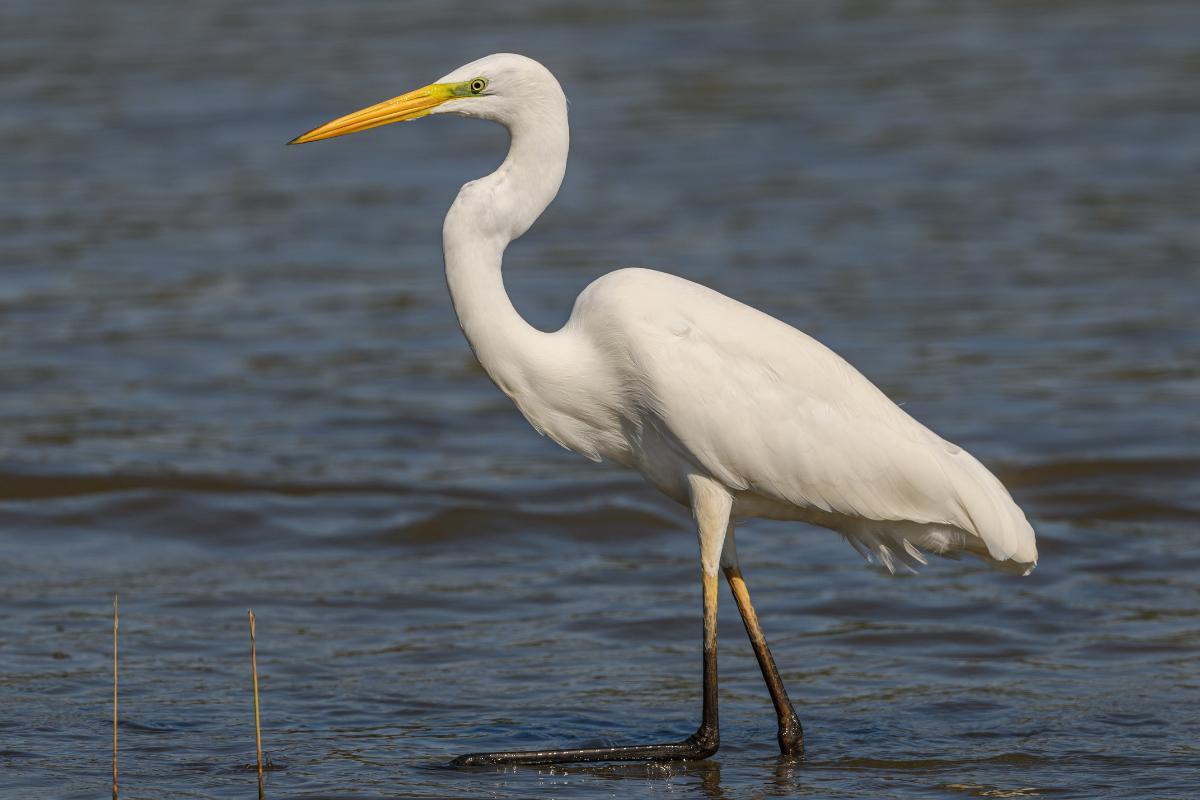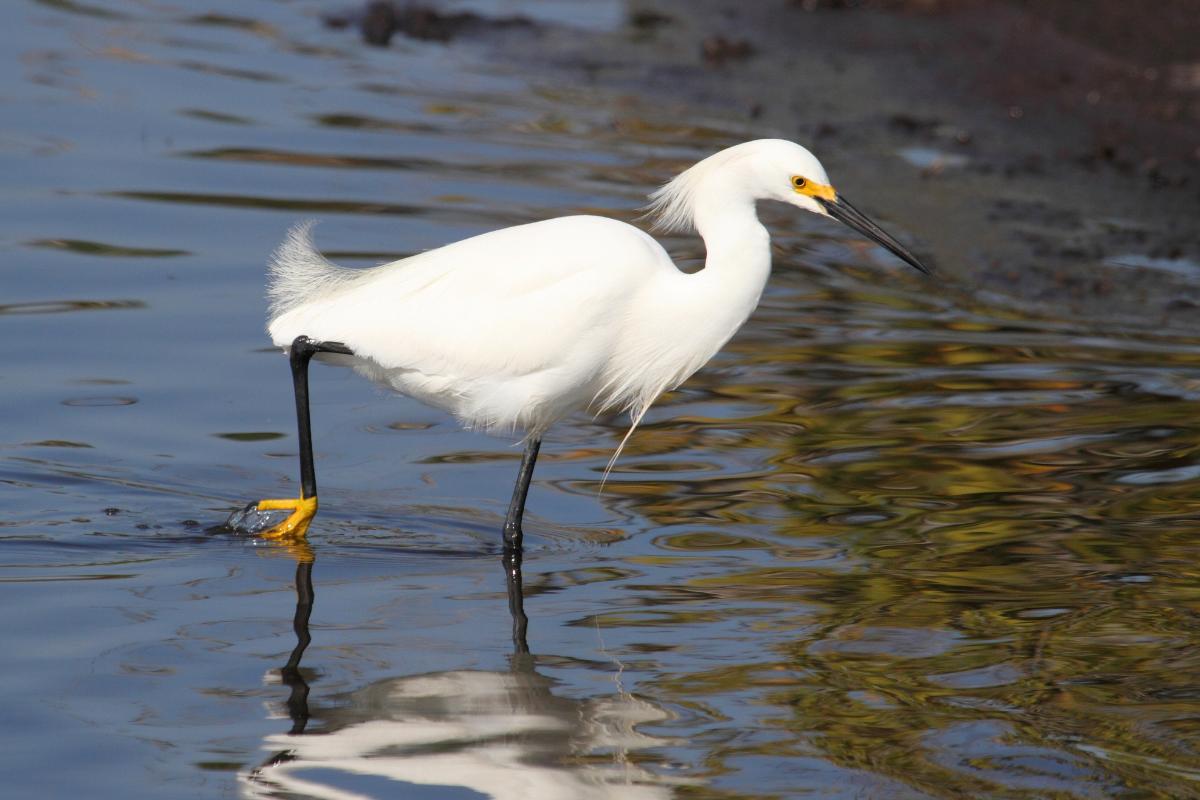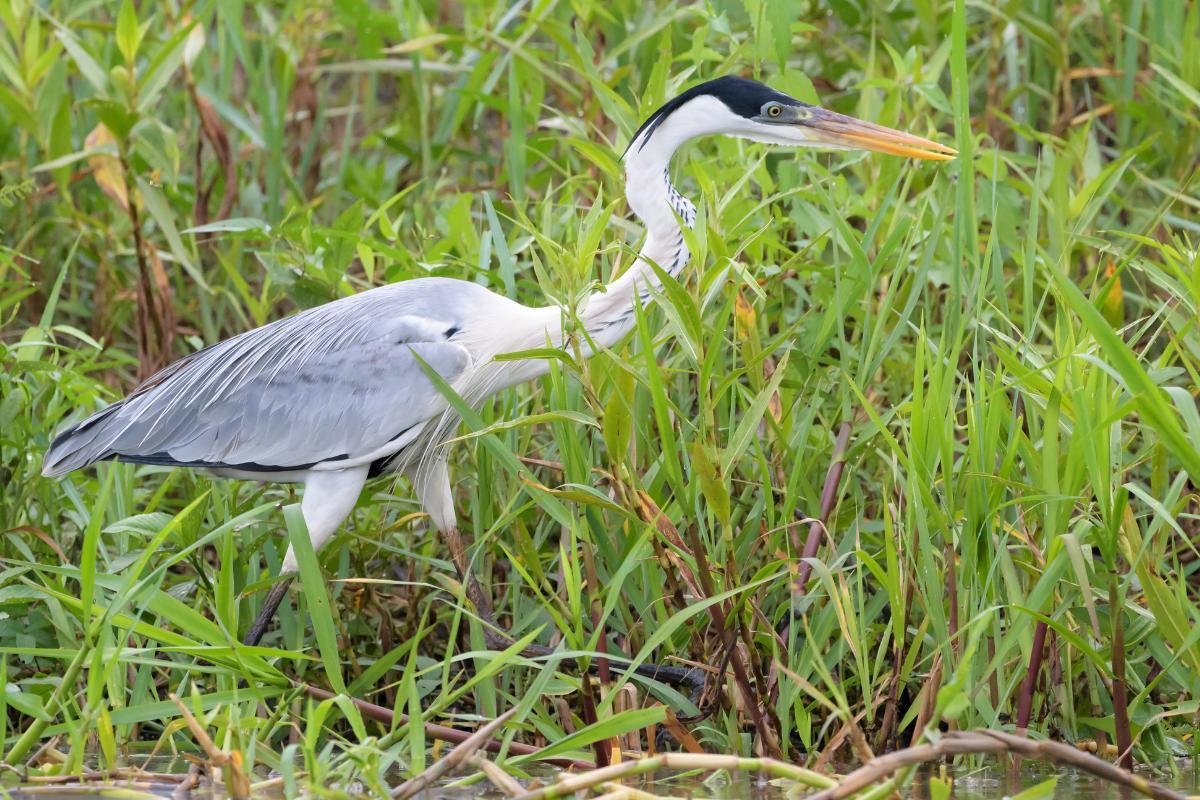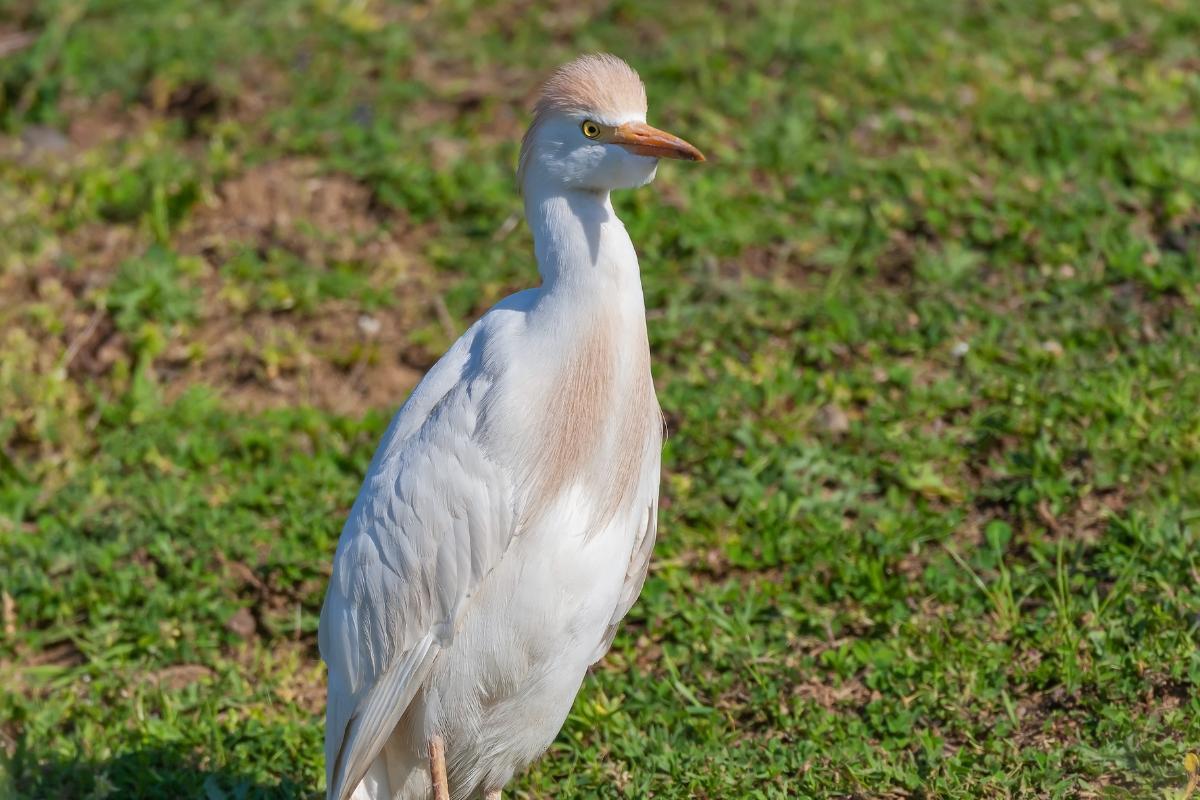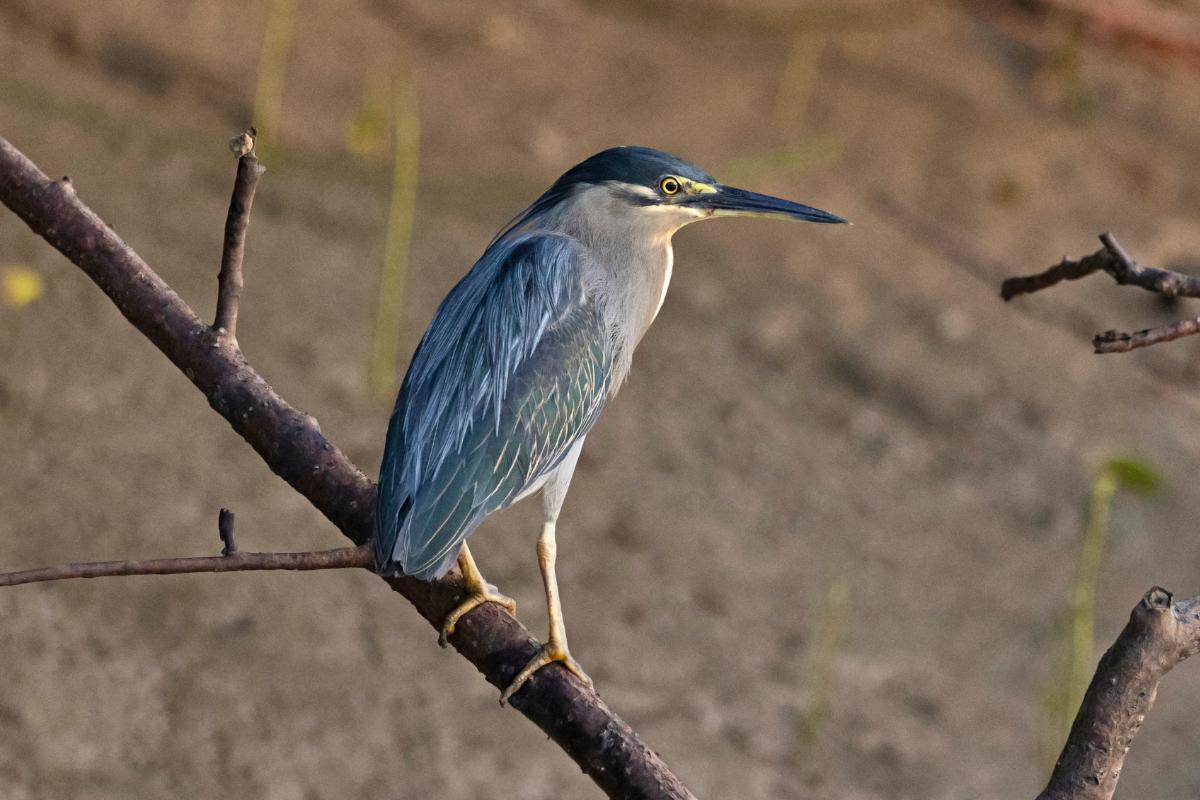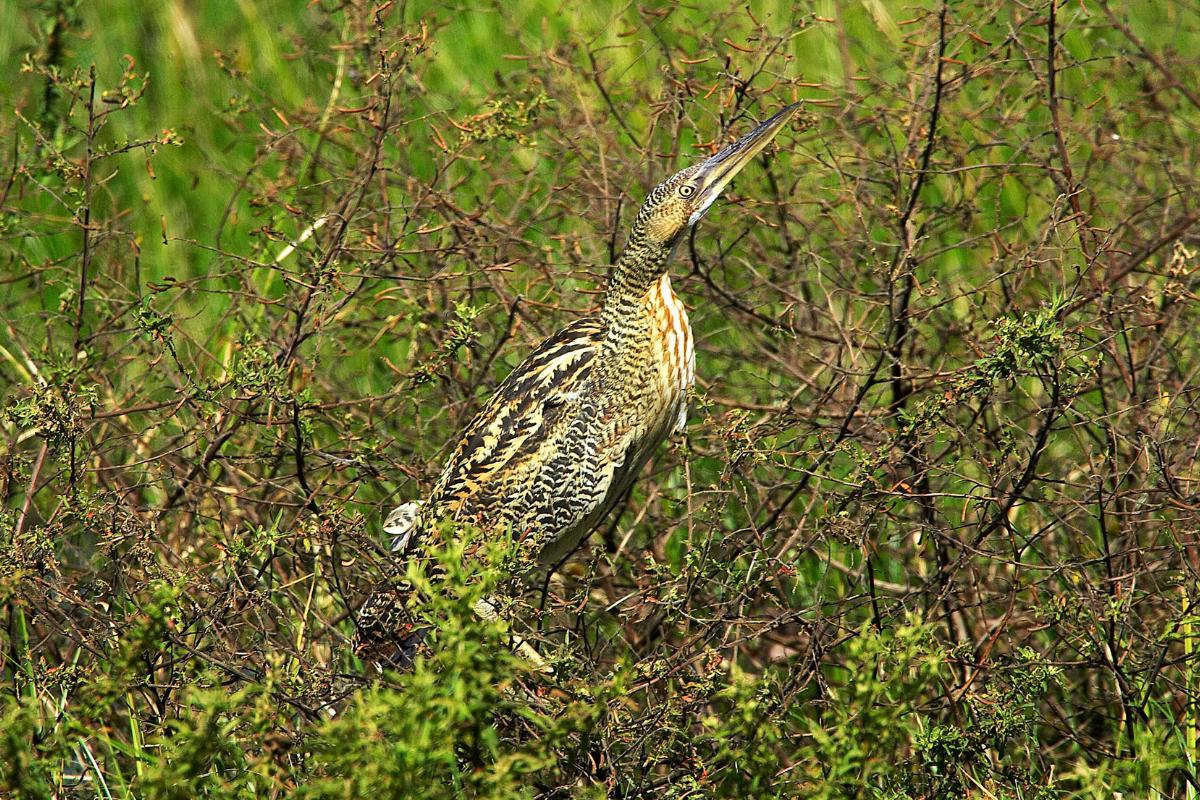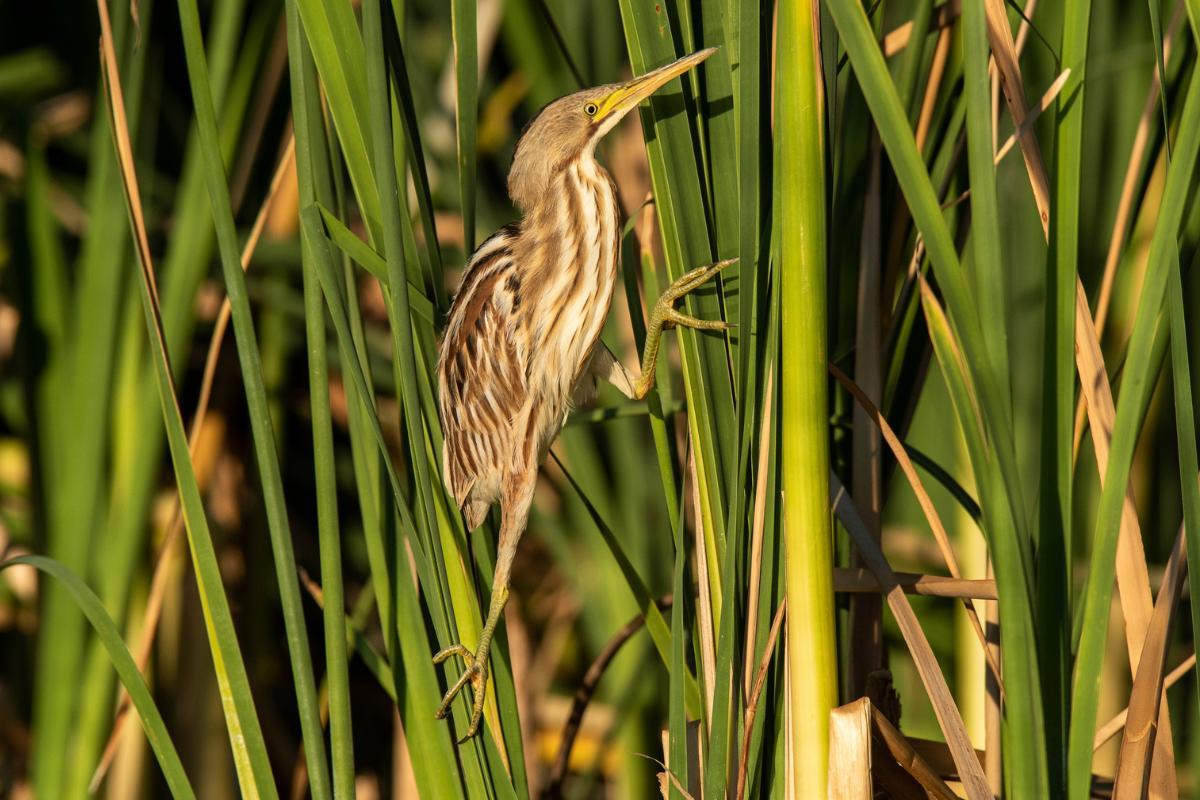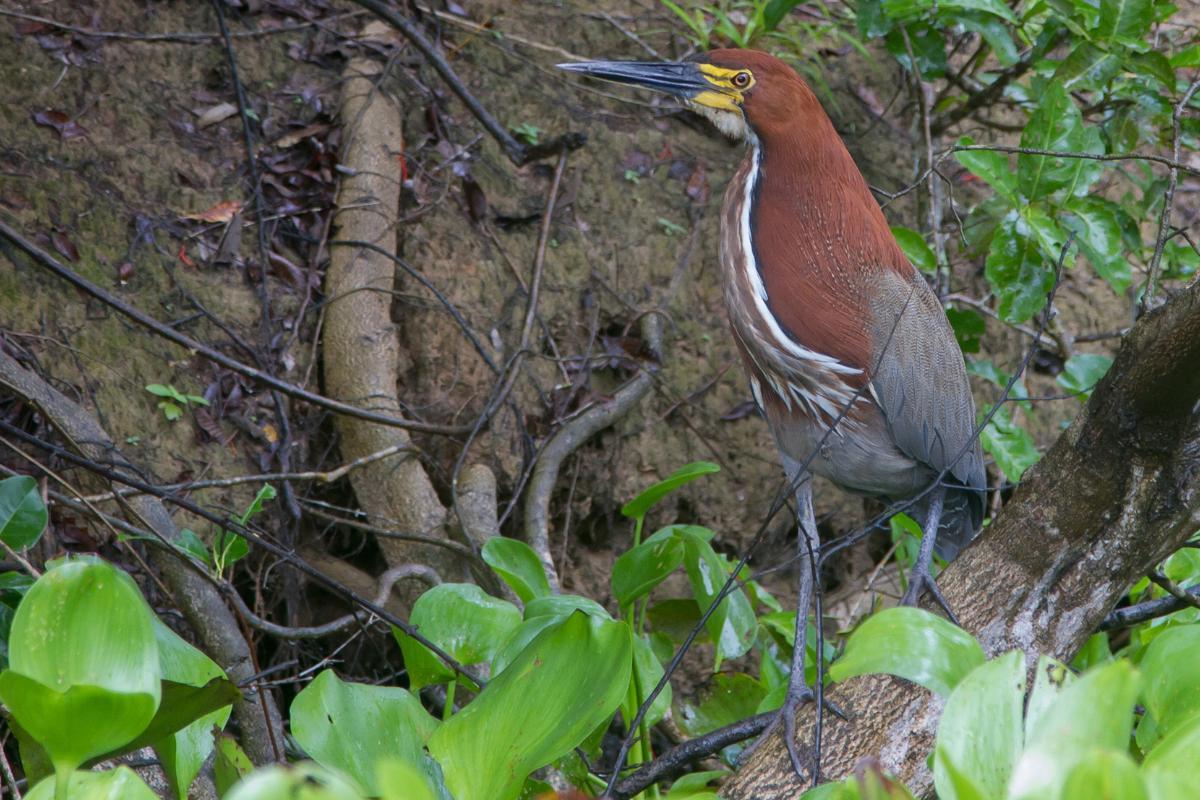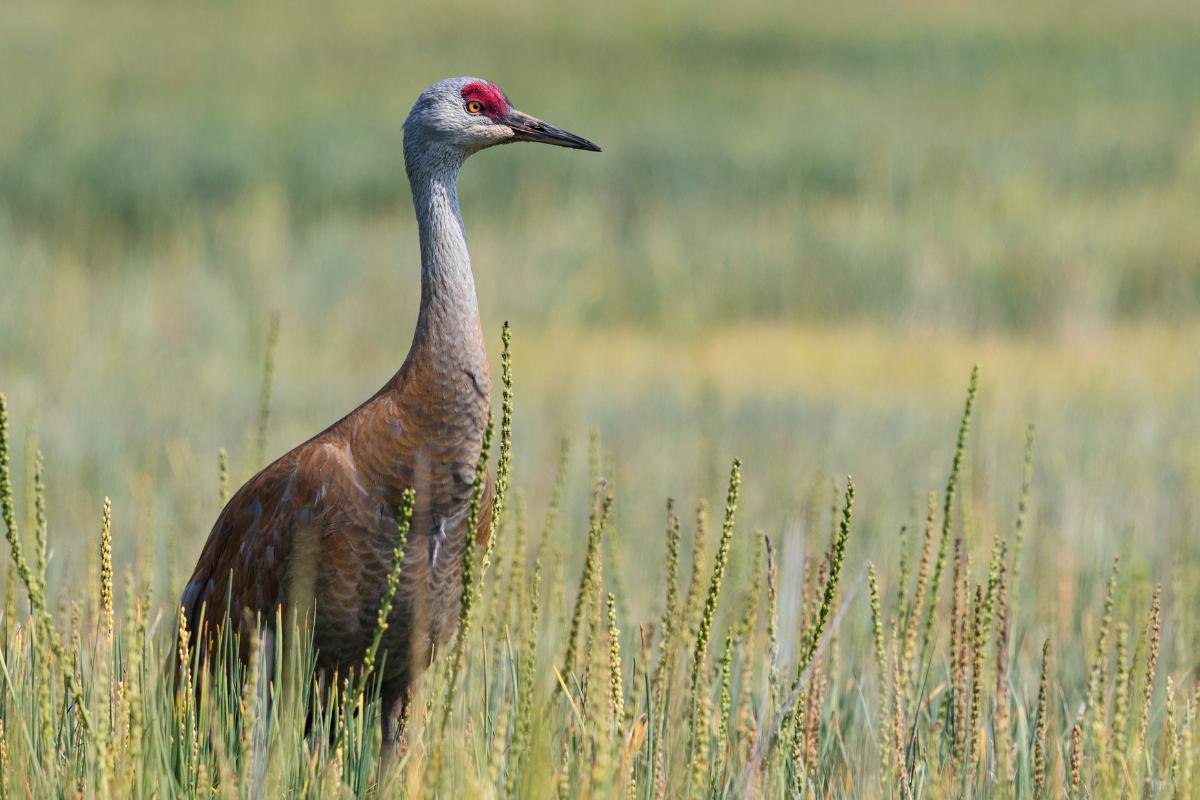Types of Wading Birds


Wading birds are not a taxonomic classification of bird types, but a loose grouping of certain birds in ornithology that share specific characteristics. These include thin and elongated legs which allow them to wade in shallow waters in search for food. They also tend to have relatively long necks and bills that are adapted to their specific diet. Habitat is one of the most defining characteristics since their name is derived from the fact they wade in shallow water. We at thedailyECO share more about what waders are, as well as types of wading birds with names and pictures.
- What are wading birds?
- Roseate spoonbill (Platalea ajaja)
- American white ibis (Eudocimus albus)
- Glossy ibis (Plegadis falcinellus)
- Jabiru (Jabiru mycteria)
- Maguari stork (Ciconia maguari)
- Great egret (Ardea alba)
- Snowy egret (Egretta thula)
- Cocoi heron (Ardea cocoi)
- Western cattle egret (Ardea ibis)
- Striated heron (Butorides striata)
- Pinnated bittern (Botaurus pinnatus)
- Stripe-backed bittern (Botaurus involucris)
- Rufescent tiger heron (Tigrisoma lineatum)
- Whistling heron (Syrigma sibilatrix)
- Sandhill crane (Antigone canadensis)
What are wading birds?
As explained in the introduction, wading birds are not a taxonomic classification of avian animals. Also known as waders, they are a loose grouping of birds which are known to wade in shallow waters to search for food. The following characteristics of wading birds can help us to provide a more complete definition:
- Legs: they have long and thin legs that allow them to move in shallow aquatic environments. They also help maintain stability while searching for food and help keep their feathers dry when they venture into wet environments.
- Toes: the feet of wading birds have thin and widely spaced toes. These prevent waders from sinking into the soft mud at the bottom of aquatic environments and on riverbanks. They also distribute the weight of these large birds which helps them maintain balance on their long legs.
- Beaks: long beaks of different shapes are adapted to different feeding strategies.
- Diet:they feed on fish, crustaceans, mollusks and other food. They don't obtain all their food from water as they can also eat insects, small reptiles and other terrestrial prey.
- Necks: they have long, strong necks that allow them to change posture, improving angle, visibility and camouflage when searching for prey.
- Habitat: they depend on wetlands for food, reproduction, nesting sites and shelter. Learn more about what is a wetland with our related article.
- Nesting: most wading birds nest in colonies which may include various species of waders, as well as other waterfowl such as gulls and cormorants. Known as breeding colonies, they offer advantages in terms of safety from predators and a food supply.
In addition to predators, there are other threats which face wading birds in the wild. These include natural phenomena such as droughts and storms which can damage their natural habitat or kill their young. Climate change exacerbates natural threats to wading birds by increasing the intensity, frequency and duration of weather events.
Habitat fragmentation and loss caused by human development also poses a serious threat to wading birds. The diversion of water for irrigation and human consumption have also drained wetlands and reduced river flows. Along with the construction of dams, various industrial processes can harm these amazing animals.
Discover more about how the construction of dams can affect natural ecosystems with our article looking at the pros and cons of hydro power.
Roseate spoonbill (Platalea ajaja)
As you can see in the picture below, the roseate spoonbill is a very striking type of wading bird. Their common name is a result of their distinctive bill which is very long and shaped like a spoon at the distal end. Similar to the flamingo, they are also known for their pink plumage which is a result of the high levels of certain carotenoids in their diet. Age, location and breeding status can also affect the coloration of their plumage.
Roseate spoonbills live in humid areas of the southeastern United States, as well as Central America, South America and parts of the Caribbean. They feed by filtering small fish, crustaceans and aquatic insects from the water. They are usually seen in groups and live with other aquatic birds.
Learn more about types of filter-feeding animals in our related guide.

American white ibis (Eudocimus albus)
The American white ibis is a medium-sized wading bird. It is recognizable by its all-white plumage which contrasts with its characteristic long, down-curved, pinkish or orange bill and legs. It is widely distributed in humid areas of the southeastern United States, Central America, South America and the Caribbean. It prefers habitats such as marshes, mangroves, lagoon edges and estuaries. It feeds on insects, crustaceans and small fish that it catches by probing the mud with its bill.

Glossy ibis (Plegadis falcinellus)
Another member of the types of wading birds known as ibises, the glossy ibis is almost the inversion of the American white ibis in terms of plumage. Their dark plumage is emblazoned with greenish, coppery and purple metallic colorations. They resemble the rainbow reflections often observed on spilled oil, something seen in the below picture. Their legs and bill are also very dark in color.
Glossy ibises use their down-curved bill to explore mud and search for invertebrates, crustaceans and amphibians. They are distributed in warm and temperate humid areas of all continents, except Oceania and Antarctica. They inhabit lagoons, estuaries and marshes. They are usually seen in flocks, often together with other species of ibis or herons.
Explore the different types of heron birds in our related guide.

Jabiru (Jabiru mycteria)
The jabiru is the tallest flying bird in Central and South America, as well as the second largest on the continent in terms of wingspan. It lives near lagoons and rivers where it feeds primarily on fish, mollusks and amphibians. Its name comes from the Guaraní language and means ‘swollen neck’ because it can inflate the subcutaneous air sacs located in its neck. This increases the bird's lightness, aids in breathing and regulates body temperature.

Maguari stork (Ciconia maguari)
The maguari stork is a large bird that can reach 4.2 ft (1.3 m) in length. It has a large beak and elongated reddish legs. Found in wetlands in tropical and subtropical areas of the Americas, they feed on fish, crabs, mollusks, crustaceans and insects. They form small flocks and usually fly at high altitudes.
The maguari stork's size means it has earned a place on our list of the biggest birds in the world.

Great egret (Ardea alba)
The great egret is a large, slender and white-plumaged wading bird that is very widely distributed. In fact, they are found on all continents except Antarctica. As the picture shows, it has black legs and a long, orange-yellow beak. Unlike some other types of wading bird, they are solitary and is usually seen in calm and shallow bodies of water. They feed on invertebrates, fish and amphibians, using their beak like a harpoon.
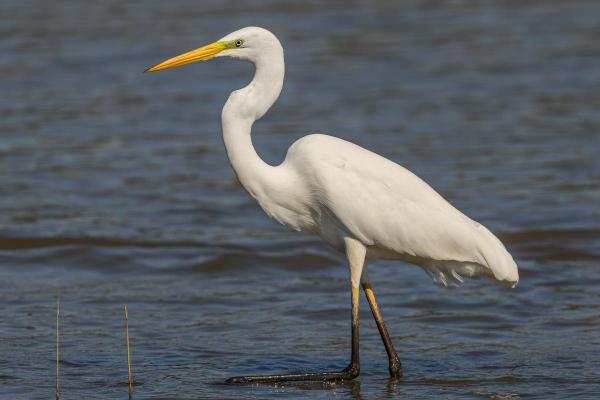
Snowy egret (Egretta thula)
This is another type of heron bird, this time with a distribution limited to the American continent. The snowy egret is so called due to their bright white feathers. Elongated feathers on their head, neck and back can be extended to be used in elaborate courtship displays. Its beak and legs are black, although there are bright yellow colorations on the face and feet. It is these characteristics which distinguish them from the great egret (Ardea alba).

Cocoi heron (Ardea cocoi)
Native to Central and South America, the cocoi heron is a type of wading bird that lives in wetlands with both fresh and brackish water. It is often seen perched in trees. Its plumage is colored with white and lead feathers, with characteristic long feathers on the nape, back and breast. Its bill and legs are yellow. It is diurnal and usually solitary, although it may form small groups.
Discover more about predatory diurnal birds with our article on the largest eagles in the world.
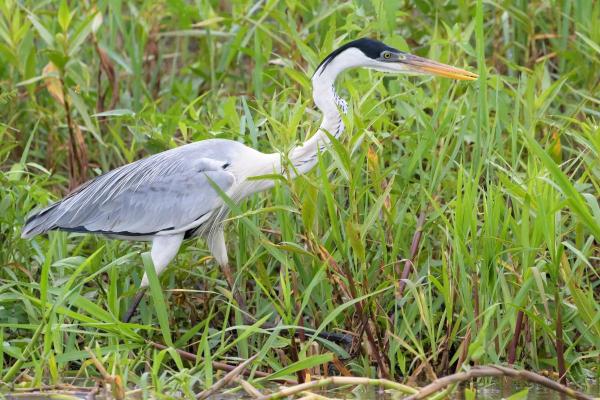
Western cattle egret (Ardea ibis)
The western cattle egret inhabits all tropical, subtropical and temperate regions of the world where it is found in savannas, grasslands, mangroves, swamps, agricultural areas and reservoirs. As with some of the other wading birds on our list, it is slender and white, but it is also adorned with golden or orange feathers on its head and neck during breeding season. Its common name comes from the fact that it is often seen perched on cattle.

Striated heron (Butorides striata)
Also known as the little green heron or mangrove heron, the striated heron the blue heron, is a wading bird species native to the Americas, Asia, Africa and Oceania. It lives in both brackish and freshwater environments. Its crown and crest are greenish black, the anterior part of the neck and chest is ochre brown and the rest of the neck, abdomen and flanks are gray. Dorsally, it is gray, but without greenish reflections. It feeds on fish and small insects with its long beak.
We already know the different types of wading birds have bills which are adapted to feeding in their aquatic environment, but you can see the diversity of these adaptations with our guide to the different types of bird beaks.

Pinnated bittern (Botaurus pinnatus)
Also known as the South American bittern, the pinnated bittern is a large wading bird found in tropical America, specifically in areas with tall grasses or reeds. It is solitary and has cryptic, light-brown plumage with brown markings. It is a patient and agile hunter that feeds on fish, insects, amphibians and small mammals. The picture only shows the bittern neck extension which is generally shorter than that of other heron-type birds.
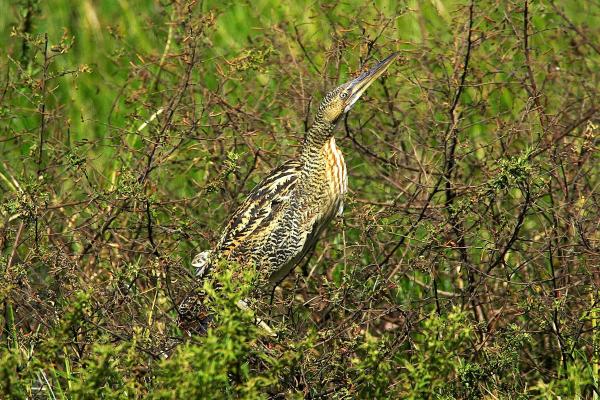
Stripe-backed bittern (Botaurus involucris)
Another wading bird known commonly as a bittern, the striped-backed bittern is a type of wading bird native to South America. It is small with distinctive striped plumage of black, ochre and cinnamon shades. It is a difficult species to observe, with very short flights in the air. This distinguished them from types of migratory birds who fly for long periods. It lives in estuaries and lagoons with dense reed beds or cattails.

Rufescent tiger heron (Tigrisoma lineatum)
The word ‘rufescent’ in their common name refers to the red colorations which can be seen in some of their plumage. The word ‘tiger’ is in reference to their vermiculated patterns which can resemble stripes. While males and female shave similar plumages, differences can be seen in adult and juvenile specimens, as well as different subspecies. It is a solitary species of wading bird with slow movements.

Whistling heron (Syrigma sibilatrix)
Despite having mainly gray plumage, the whistling heron has some of the most colorful markings in wading birds. This can be seen in the yellow feathers which adorn the chest and neck areas, as well as the pink and black bill with blue colorations in the orbital areas. These colors almost make it look like the bird is wearing heavy makeup. They inhabit marshes, meadowlands, rural areas and the areas around mountains. Usually found in pairs, it can occasionally form groups of up to 45 individuals. It emits a prolonged whistle, as well as a hoarse sound.

Sandhill crane (Antigone canadensis)
Another of the types of wading birds with distinct markings, the sandhill crane is a large wading bird with predominantly grey plumage, long black legs and a striking red forehead. You can see these colorations in the below picture. It is found in North America, where it makes long migrations south during the winter. They can even reach parts of Central America.
The sandhill crane inhabits grasslands, wetlands and open fields, feeding on a varied diet that includes roots, grains, insects and small vertebrates. It is known for its loud calls and dancing mating rituals that include jumping and coordinated movements between partners.
Now you know what are wading birds, as well as examples of them in the wild, you can learn more about how ornithologists group animals together with our article asking how are birds classified?
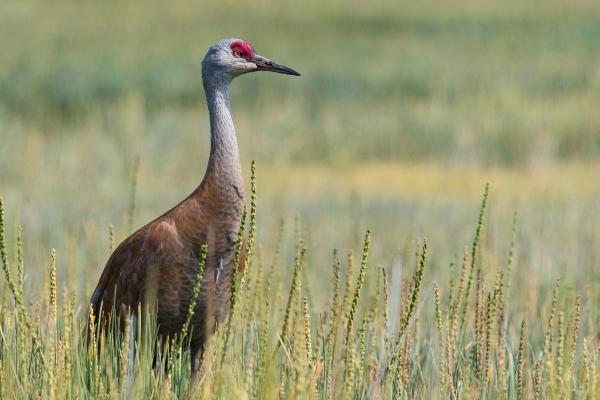
If you want to read similar articles to Types of Wading Birds, we recommend you visit our Wild animals category.
- Audubon. (n.d.). Wading Birds.
https://corkscrew.audubon.org/conservation/wading-birds - National University of Litoral, Faculty of Veterinary Sciences (2025). Argentine Birds. Bird Families.
https://www.fcv.unl.edu.ar/aves/





